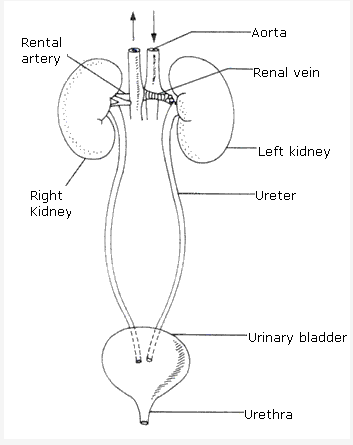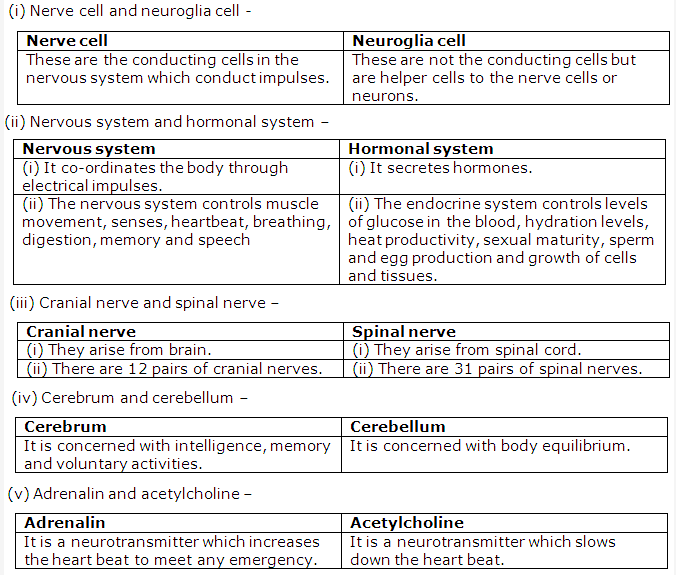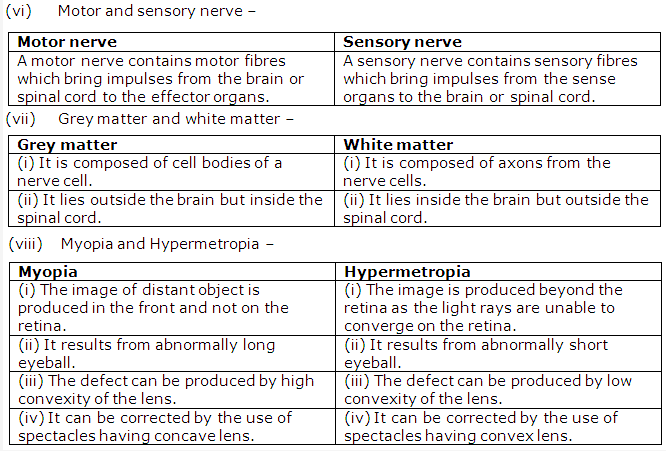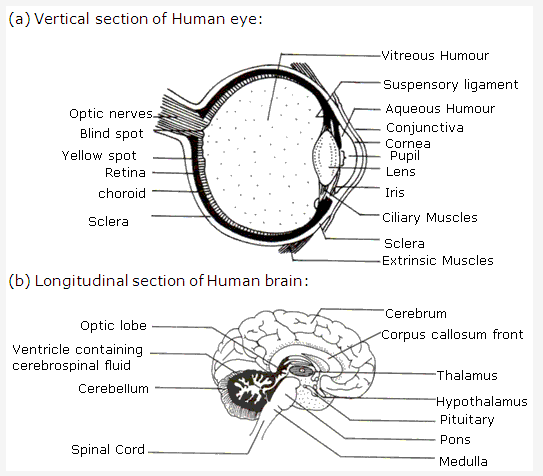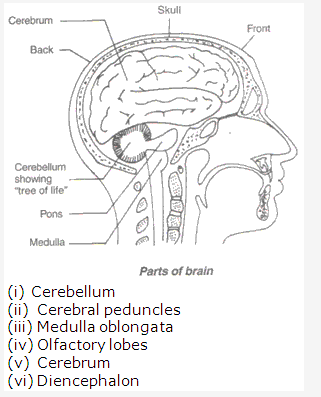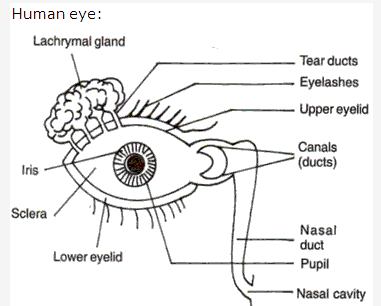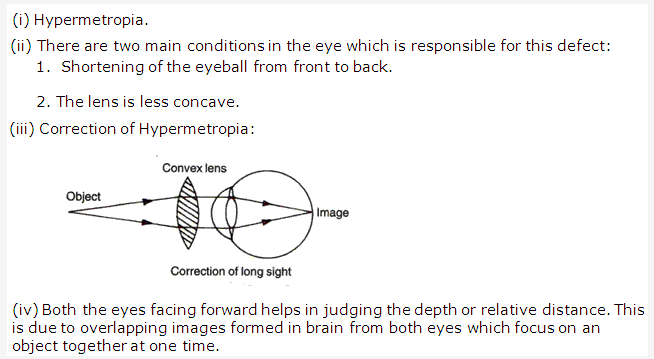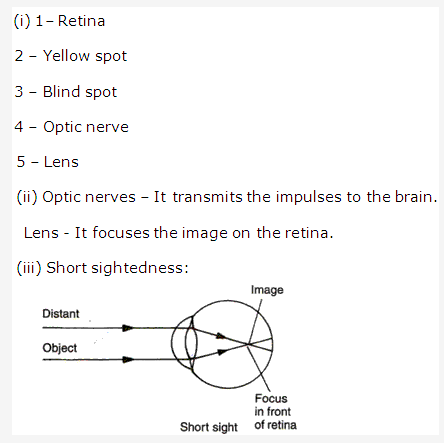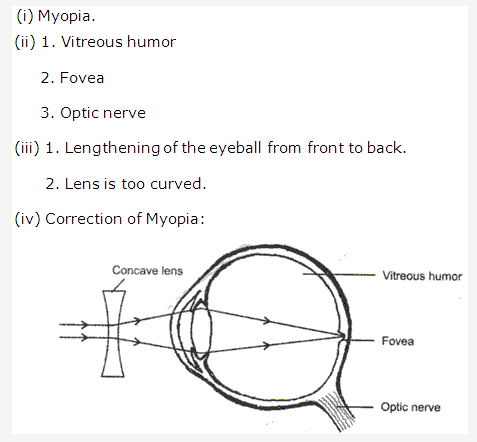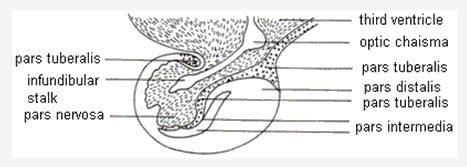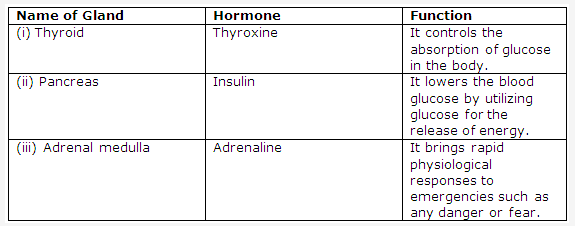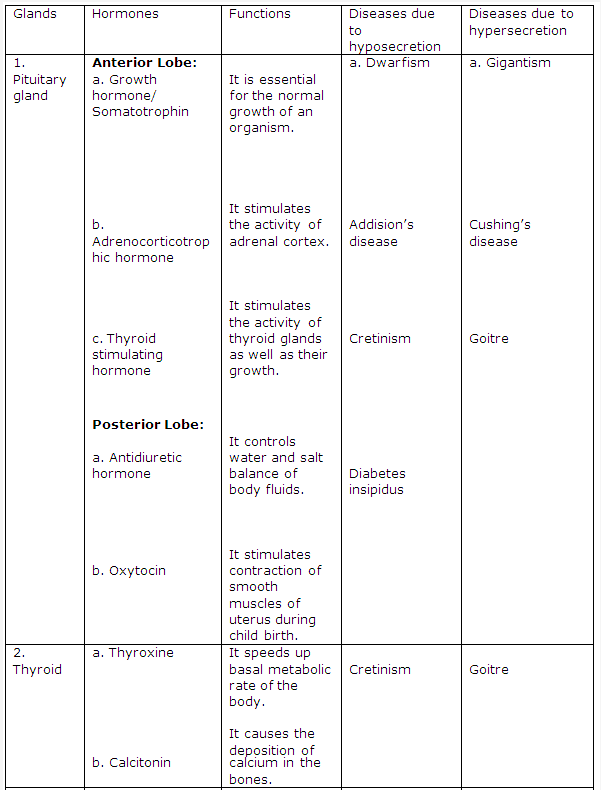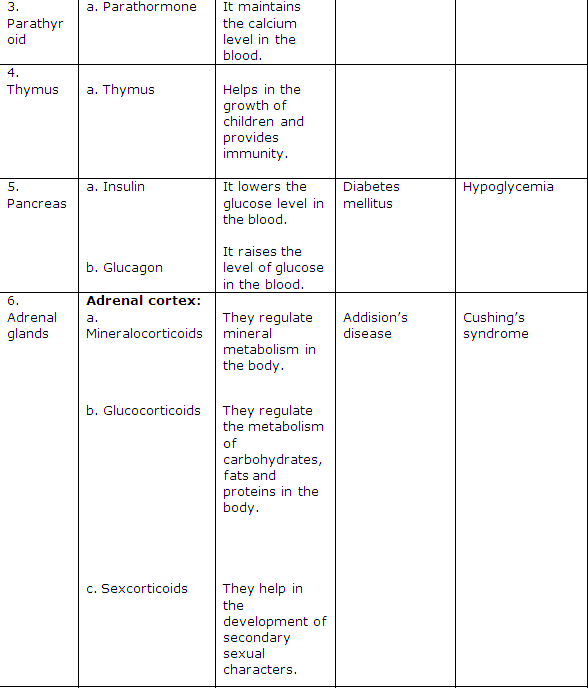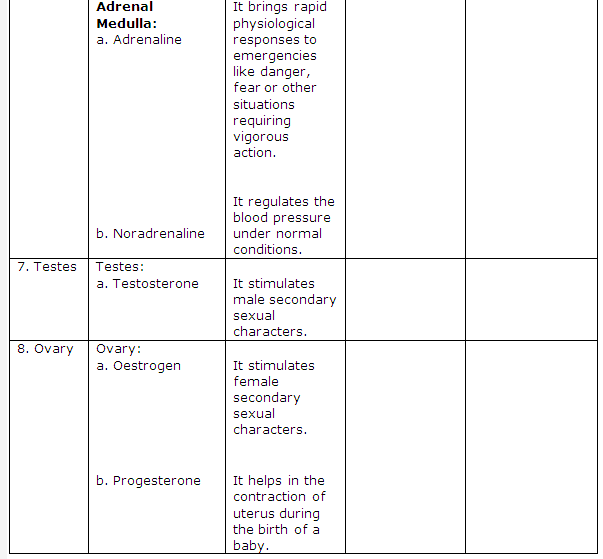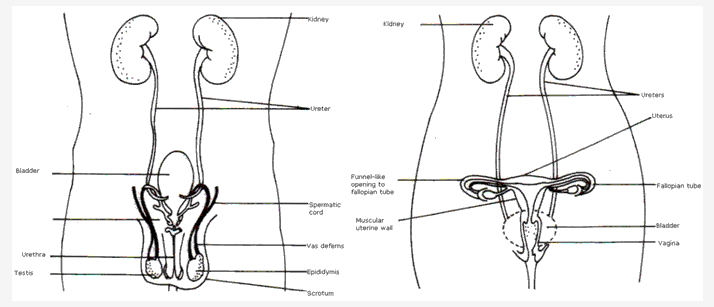Frank ICSE Class 10 Biology Solutions – Circulatory System
PAGE NO : 90
Solution 1: Circulatory system: It is a system of organs that takes part in the flow of materials in the body of an organism inside an extracellular fluid.
Circulatory system in humans:
- The right atrium receives deoxygenated blood from all the parts of the body through large veins called vena cava.
- When the right atrium is full of blood, it contracts and the blood is forced into right ventricle.
- When the right ventricle is full of blood, it contracts and the blood is pumped into the pulmonary trunk.
- From right ventricle, the pulmonary artery carries the blood to the lungs for oxygenation.
- The oxygenated blood returns to the heart via pulmonary veins that empty into the left auricle.
- When the left auricle contracts, the blood passes into the left ventricle by the opening of bicuspid valve.
- On contraction of the left ventricle, the blood is pumped into the artery called aorta.
- The aorta branches into vessels which transports blood to the heart and all the body parts.
Solution 2:
- The SA is also called the pacemaker because it establishes the basic frequency at which the heart beats. It starts each heart beat and sets the pace for the whole heart.
- There is no mixing of deoxygenated and oxygenated blood in the human heart because of double circulation of blood where the blood passes twice through the heart and the right half of the heart is concerned with pumping deoxygenated blood while the left is concerned with pumping of oxygenated blood.
- The closed circulatory system is more efficient than the open system because in closed system the blood flows inside arteries or veins all the time which stops the mixing of blood with other bodily fluids and helps the transport of the blood around the body.
- The left ventricle possess a thicker wall than the right ventricle because it pumps the blood at a higher pressure since blood from the left ventricle goes to all areas of the body while the right ventricle only has to pump blood to the lungs which is a much shorter distance, therefore less pressure is required.
Solution 3:

Solution 4:
The functions of blood plasma : It transports gases and other materials, maintains blood pH, body immunity, body heat regulation and also regulates the osmotic pressure of the blood.
Solution 5:
Double circulation means during one circulation blood passes twice through the heart. It includes both pulmonary and systemic circulation. It is necessary as it keeps oxygenated and deoxygenated blood separate.
Solution 6:
The materials which are carried by the blood are: oxygen, carbon dioxide, water, digested food, organic wastes, hormones and antibodies.
Solution 7:
The main function of erythrocytes is to transport the respiratory gases – CO2 and O2.
Solution 8:
- Fibrinogen
- Phagocytosis
- Haemoglobin
- Auricular systole
- Angiology
- Pericarditis
- Tricuspid valve
- Foramen ovale
- Polycythemia
- Lubb
PAGE NO : 91
Solution 9:
- Histone
- Foramen ovales
- Nerve
- RBC
- Albumin
Solution 10:
- Inferior vena cava, superior vena cava and coronary sinus
- Ventricles
- Function of bicuspid valve: It prevents the reverse flow of blood from the left ventricle into the left auricle.
- Function of tricuspid valve: It prevents the reverse flow of blood from the right ventricle into the right auricle.
Solution 11:

Solution 12:
- (c) Pulmonary vein
- (b) Thebasius valve
- (d) Aorta
- (e) Pulmonary arch
- (a) Clotting
Solution 13:
- (d) 5 l
- (c ) Left ventricle
- (b) Capillaries
- (a) bone marrow
- (c ) 120 days
- (a) myogenic
- (a) Eustachian valve
- (c ) ventricle
- (b) 70-80
- (c ) Monocytes
- (d) 90%
- (c) William Harvey
- (b) Spleen
- (d) all the above
- (d) O
